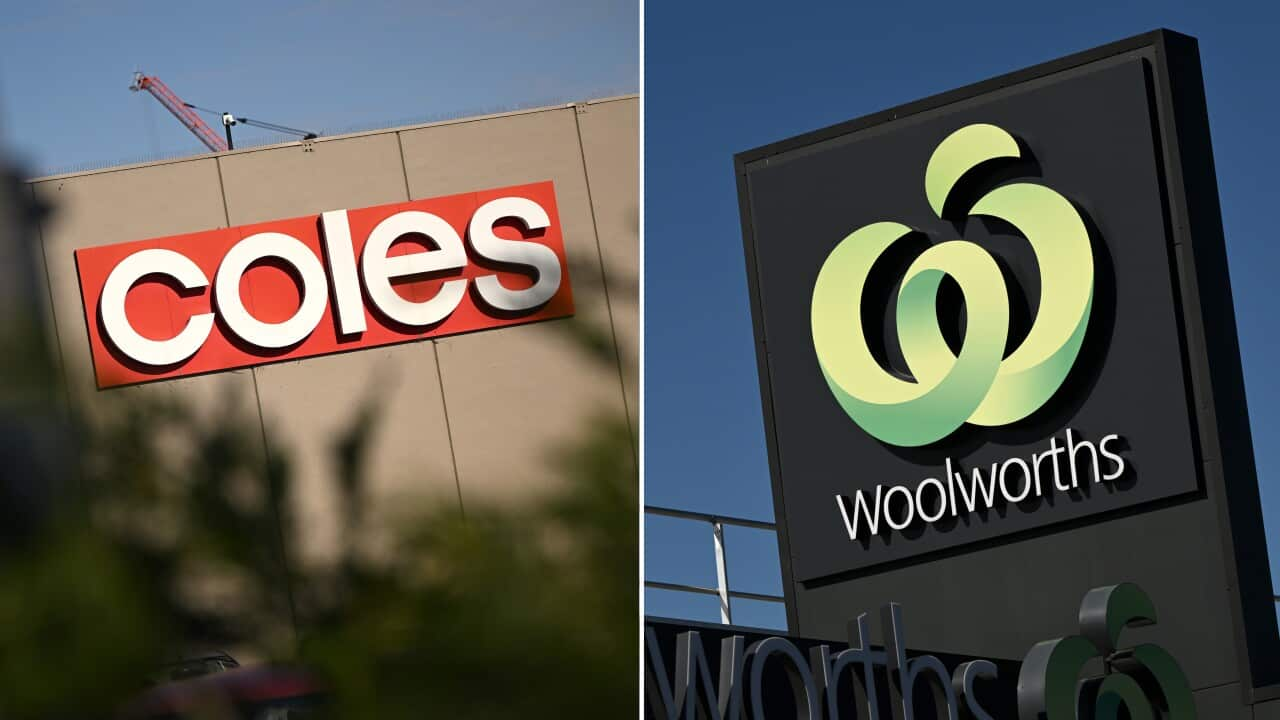As grocery prices continue to climb, amid a broader , Australians are looking for any way to save.
And it turns out that might mean re-entering the sometimes stigmatised territory of buying home brand alternatives.
The latest quarterly update from supermarket giant Coles found that one in three customers were buying more home brand products to save at the checkout.
But what is a home brand product — and does the lower price come with a catch?
What's the deal with home brand?
Home brand groceries — or private labels — are items made specifically for supermarkets and sold under their branding.
Seen at , these products typically aren't manufactured by the supermarkets themselves. Instead, they're contracted out to third-party producers.
In some cases, the exact same factory might produce a fancier brand of tinned tomatoes and a supermarket's home brand variety.
"That doesn't mean the product is always exactly the same as the 'branded' product; it just means it was made at the same factory," Sarah Megginson, media spokesperson at financial comparison site Finder, told SBS News.
"In some cases, the product is indistinguishable from the brand name, and in other cases, it tastes or works completely differently," she said.
Why are home brand products cheaper?
There are a few reasons why home brand products cost less than branded ones.
Megginson points to reduced packaging costs, fewer or no margins for intermediaries in the supply chain, and sometimes lower ingredient or formulation costs.
But the biggest factor? Minimal marketing spend.
"Brands not only invest huge dollars in brand development and marketing campaigns for their products out in the world, but they also spend a small fortune with Woolworths to secure 'shelf space' in the prized eye-level shelves or end of aisles," she said.
"Home brand products are obviously not investing in this — they're happily sitting on the bottom shelves, out of the way of their more expensive counterparts."
"They are almost always cheaper than brand names and when budgets get tight, they're a great option if they do the job on a taste — or in the case of cleaning products, a performance — basis," Megginson said.
Kate Browne, head of research at Compare Club, says home brand quality in Australia is "very good".
The only thing you might miss is a range of options. A home brand pasta sauce might just have tomatoes in it, she says, while a branded version could include basil, garlic, or other flavours.
Sometimes, price differences also come down to extras — like whether your tinned tomatoes have a ring-pull lid or not.
Do home brand products hold up?
According to CHOICE, the answer is yes — often better than you'd expect.
The consumer advocacy group has tested a number of home brand products over the years and says they frequently outperform pricier alternatives.
"We've found this happens across a number of categories, including tea bags, coffee, ice-cream, dishwasher detergent, toilet paper, and more," a CHOICE expert told SBS News.
"For example, our most recent tea bag test found that Aldi's Just Organic Black Tea was the highest scoring overall out of 32 tea bag brands. At just 6 cents per bag, we found they were a cheaper and better-tasting option than brands like Lipton, Twinings, Tetley, and T2."

Source: SBS News
What's in it for supermarkets?
For supermarkets, home brand products can be more than a budget-friendly option for shoppers — they're also a profit booster.
"Supermarkets love home brands because they own those brands," Browne said.
"We've seen a huge shift in the way our supermarkets in Australia retail. Ten or 12 years ago, there were a lot more name brands. Now we've seen a huge shift to more and more supermarket-owned brands, and that is purely for profit."
Browne explains that when supermarkets deal with name brands, they have to manage external retailers and suppliers, which can cost more. With home brands, they cut those ties — and keep more of the margins.
While it can mean less choice for consumers, it often results in lower prices and more control for the retailers.
Cost of groceries biting into budgets
As cost of living remains front of mind for many Australians, our shops are now looking a little different.
A January survey from CHOICE found 84 per cent of households are concerned about the cost of food and groceries.
"Due to rising costs, many people are switching to cheaper products to save money on their grocery bills," CHOICE said.
A January Finder survey of 1,013 people found that 39 per cent are switching to cheaper brands due to financial pressure.

More Australians are looking to cut back on their grocery bills, with 39 per cent saying they're switching to cheaper brands. Source: SBS News
"We're seeing a lot of shift in behaviour. Concerningly, we're seeing people rely on buy-now-pay-later to buy groceries in some scenarios," Browne said.
"But we're also seeing people being a lot more agnostic around brands. People are looking for the cheapest."
She also says people are now shopping around at multiple stores before heading to the big supermarkets in a bid to save some cash. "They're looking for the best possible deal and they're trying new brands."
Once considered a last resort, home brand products are now a regular feature in many households — and the stigma is fading.
"We've seen a real big shift over the last couple of decades around home brands," Browne said.
"There was a bit of a stigma back in the day, but now we've seen them become a real game changer in the market."





